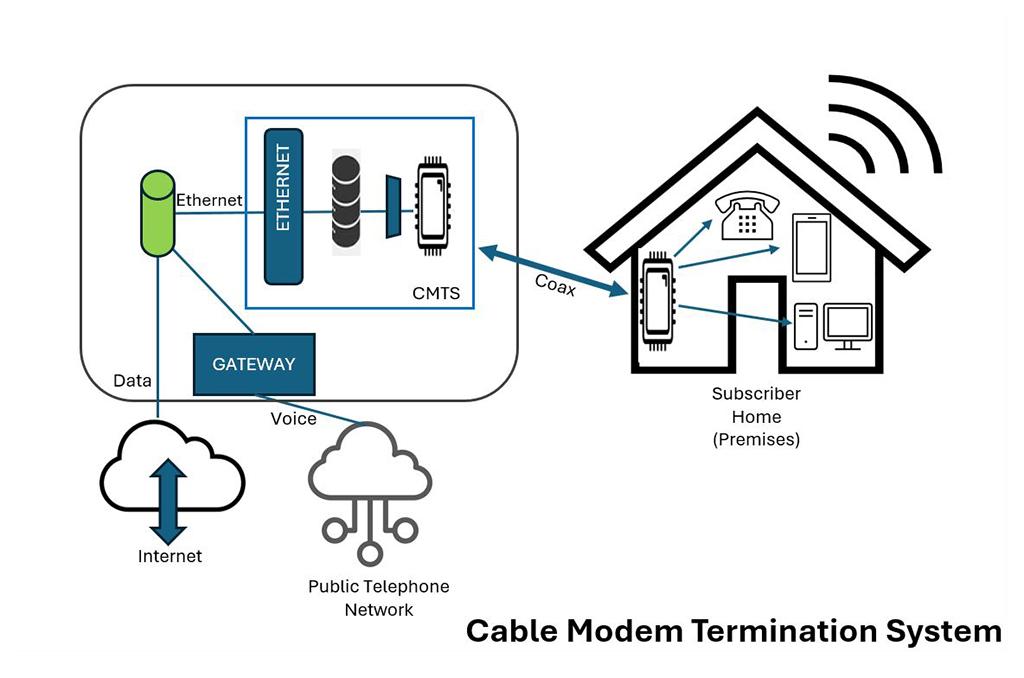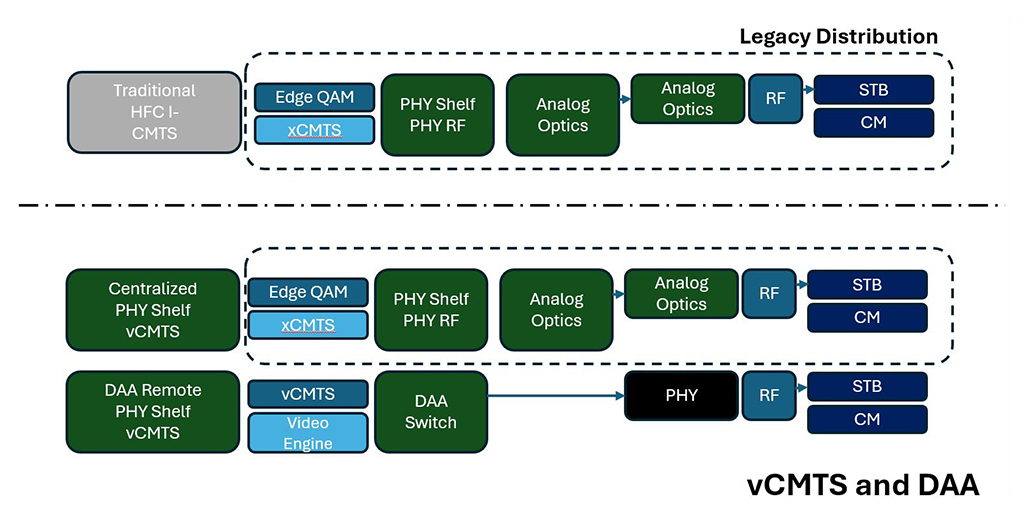Reaching for AI in the Cloud
Remodeling in the cloud is allowing platform providers to offer true AI services

Cloud service providers are expanding and broadening their business—and especially their service offerings—as everything seems to be moving toward AI. To help accomplish this, without rebuilding or replacing existing infrastructures, the new term “AI cloud” becomes a service offering that leverages some of the new and advanced telecom technologies the cable industry has been utilizing for a few years now.
Wondering how new service providers, including the cable industry, are effectively linking AI into cloud computing? This article will explain some of those new advances and how they are being melded into the cloud.
Don’t be surprised if, in the next five years or sooner, we start to see AI and/or cloud computing services being added to our cable systems for consumers, home and business. You’ve likely seen TV ads that exemplify the foundation of such services and may not even realize it is “already” happening.
For the future, one approach that will be needed and become of value to users is the integration of AI tool sets and their models into cloud infrastructures for tasks such as (home or business) automation, model training and data analysis. Such prospects will involve cloud platforms that leverage AI-specific resources, and in turn, can help streamline the AI development life cycle and deployment. Cloud becomes a very significant part of this AI movement.
Several new steps and approaches will provide unique opportunities for the more traditional segments of the media and technology industries and include some of the following issues, changes and conclusions.
Access to Expertise
Cloud service providers are beginning to change their physical data and transmission centers. They are investing heavily in AI topologies for end users and those with business-related requirements in such areas as operations, research and development. As the major cable providers continue to add new service segments (e.g., business connectivity and cellular communications), there becomes a great new need for these media providers to edge towards becoming cloud vendors that will, in turn, provide user access to emerging AI tools and technologies.
These providers will need to expand and provide sufficient compute power and resources, leading to the building of newer and larger data centers with the specifics and needs for AI applications. This further need for more power to support cooling and servers will force these providers to new locations, such as more rural areas where power is affordable and space is not at a premium. Connectivity to end users (customers) will further require additional high-speed (fiber optic) services which, in turn, means a change in physical distribution platforms.
The professional video industry's #1 source for news, trends and product and tech information. Sign up below.
Virtualization
Regardless of today’s core functions, data centers will soon need to be capable of providing new insights employing systems such as virtual cable modem termination systems (vCMTS) and Distributed Access Architecture (DAA). vCMTS is a software-based CMTS, while DAA decentralizes the cable network by moving functions from the headend to the edge of the network, closer to the customer. The vCMTS replaces the traditional, hardware-based CMTS with a software platform running on servers and includes more centralized management and control of the network (Fig. 1).
Some of the early advances made by cable operators and vendors in virtualizing the industry’s access networks and expanding their capacity could become a hybridized means for multipurpose cloud providers who are increasingly moving to virtualize hybrid fiber-coax (HFC) access networks as these next-gen technologies emerge.
Such a change is critical to meeting the challenges of emerging GenAI solutions to deploy and manage the mass data-distribution industry’s long-term health and competitive prospects. Cable service providers are always using new systems technology, such as AI, to mitigate failures. For example, one methodology is limiting no more than just a single fiber deep node issue per 40 customers. A legacy cable hub population of 20,000 to 30,000 customers using a traditional CMTS was the expectation less than a decade ago.
Moving to the Edge
In another way, the models being used by the cable industry are taking key access network functions out of the traditional cable headend and placing them in software running “at the edge” on much simpler and less costly commercial off-the-shelf (COTS) servers. Despite a slow start, cable operators are increasingly moving to virtualize their hybrid fiber-coax (HFC) access networks as the next-gen AI technology emerges as critical to the industry’s long-term health and competitive prospects (Fig. 2).
Benefits for operators include addressing the future needs to meet the capacity and connectivity challenges of a new decade. Whether the systems are to be used for traditional media distribution or as an augmentation to offerings that include “smart features” driven under the “AI umbrella,” speed, efficiency and continual access will be essential to the overall success of the mainstream media and cable solutions providers.
Cloud Platform Changes
Additional related practical requirements and capabilities for cloud platforms headed toward AI services include these core requirements:
Scalability: To rapidly and efficiently—based on fluctuating workloads—expand services without overspending on resources.
Speed and Agility: Cloud-managed abilities to provide rapid deployment and development capacities, allowing for accelerated time-to-market especially for AI applications.
Data Management Enhancement: Cloud platforms must offer robust and stabilized data storage and compute management capabilities. For AI applications, this means the cloud provider must be able to securely store, process and deliver data to customers in large volumes, especially when offering AI model training and insight.
AI Models With Prebuilt Solution Sets: Cloud AI platforms must further be able to offer “pretraining” AI models for concepts such as image recognition, LLM (large language models) and speech-to-text/text-to-speech translation.
Outsourcing Automation/Security
Process automation and optimization is a normal and routine process for AI solution systems; thus, the AI cloud platform providers are tailoring their systems to help streamline tasks that have semi-consistent applications (such as delivery of services or products and order entry prediction requirements). Optimization of these tasks, in turn, will improve accuracy and reduce costs across myriad common business functions.
AI-cloud platforms may also help or be used to improve personalized customer interactions, enable better, more efficient customer service and streamline workflows. We’ve already recognized that the “bot” is the new customer service representative!
Last but not least, AI-cloud platforms should offer robust security features.
Real-time threat detection and (automatic) compliance monitoring will aid businesses in protecting not only their sensitive information, but also in ensuring customers are clear of potential bad actors—both of which may be essential to meet regulatory requirements.
Public Interaction
AI-cloud platforms are becoming increasingly important, and we now see them expanding focus on their core competencies. Businesses—including media-centric enterprises—that must interact publicly can now outsource AI infrastructures and management to their cloud providers as part of a regular service offering. This dramatically changes the core capabilities and pushes new strategic initiatives without a need to retool and invest in additional secondary services outside their core directives.

Karl Paulsen recently retired as a CTO and has regularly contributed to TV Tech on topics related to media, networking, workflow, cloud and systemization for the media and entertainment industry. He is a SMPTE Fellow with more than 50 years of engineering and managerial experience in commercial TV and radio broadcasting. For over 25 years he has written on featured topics in TV Tech magazine—penning the magazine’s “Storage and Media Technologies” and “Cloudspotter’s Journal” columns.


